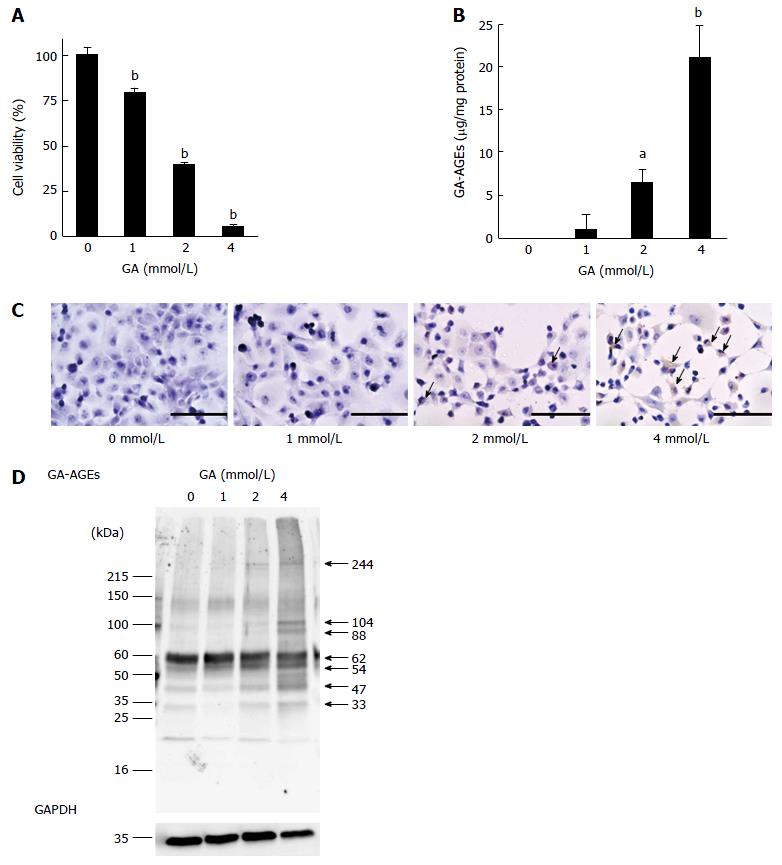Copyright
©The Author(s) 2017.
World J Gastroenterol. Jul 21, 2017; 23(27): 4910-4919
Published online Jul 21, 2017. doi: 10.3748/wjg.v23.i27.4910
Published online Jul 21, 2017. doi: 10.3748/wjg.v23.i27.4910
Figure 1 Analysis of cell viability, quantity of glyceraldehyde-derived advanced glycation-end products, immunostaining of glyceraldehyde-derived advanced glycation-end products, and molecular weight of glyceraldehyde-derived advanced glycation-end products in PANC-1 cells treated with glyceraldehyde for 24 h.
A: Cell viability was assessed by the WST-8 assay. This assay was performed for three independent experiments. One assay was performed for n = 7. Data are shown as mean ± SD (n = 7); B: Slot blotting analysis of intracellular glyceraldehyde (GA)-derived advanced glycation-end products (GA-AGEs). Cell lysates (2.0 μg of protein/lane) were blotted onto polyvinylidene difluoride (PVDF) membranes. The amount of GA-AGEs was calculated based on a standard curve for GA-AGEs-BSA. Slot blotting was performed for three independent experiments. Data are shown as mean ± SD (n = 3); C: Immunostaining of GA-AGEs in PANC-1 cells. Cells were treated with 0, 1, 2 and 4 mmol/L GA. The arrow indicates the area stained by the anti-GA-AGE antibody. The scale bar represents 200 μm; D: Western blotting analysis of intracellular GA-AGEs in PANC-1 cells. Cell lysates (15 μg of proteins/lane) were loaded on a 40-150 g/L polyacrylamide gradient gel. Proteins on the PVDF membrane were probed with anti-GA-AGE and anti-GA-3-phosphate dehydrogenase (GAPDH) antibodies. The molecular weight of GA-AGEs was calculated based on a single logarithmic chart used by the molecular marker. GAPDH was used as the loading control. WB was performed for two independent experiments. A and B: P values were based on Dunnett’s test. aP < 0.05, bP < 0.01 vs control.
- Citation: Takata T, Ueda T, Sakasai-Sakai A, Takeuchi M. Generation of glyceraldehyde-derived advanced glycation end-products in pancreatic cancer cells and the potential of tumor promotion. World J Gastroenterol 2017; 23(27): 4910-4919
- URL: https://www.wjgnet.com/1007-9327/full/v23/i27/4910.htm
- DOI: https://dx.doi.org/10.3748/wjg.v23.i27.4910









